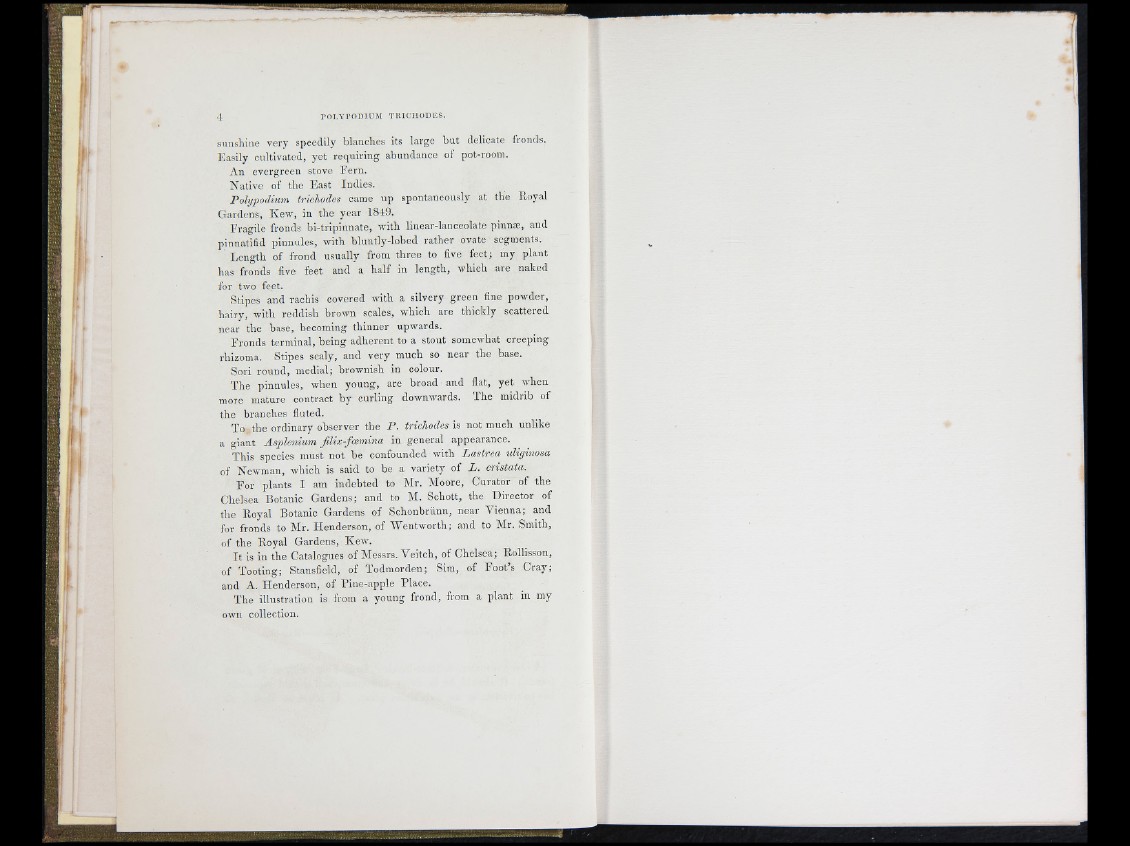
IIBPP
I I
4 P O I .Y P O D IU M T R IC H O D E S .
sunshine very speedily blanches its large h u t delicate fronds.
Easily cultivated, y e t req u irin g abundance of pot-room.
An evergreen stove Eern.
N ative of the East Indies.
P olypodium trichodes came up spontaneously at the Royal
Gardens, Kew, in th e year 1849.
Fragile fronds bi-tripinnate, with linear-lanceolate pinnæ, and
pinnaHHd pinnules, with bluntly-lobed ra th e r ovate segments.
L en g th of frond usually from th re e to five feet; my plan t
has fronds five feet and a h a lf in length, which are naked
for two feet.
Stipes and rachis covered with a silvery green fine powder,
h airy, with reddish brown scales, which are thickly scattered
near the base, becoming th in n e r upwards.
Fronds terminal, being adherent to a stout somewhat creeping
rhizoma. Stipes scaly, and very much so near the base.
Sori round, medial; brownish in colour.
The pinnules, when young, are broad and flat, y e t -when
more mature contract b y curling downwards. The midrib of
the branches fluted.
To the ordinary observer the P . trichodes is not much unlike
a giant A splénium filix -foe m in a in general appearance.
This species must not be confounded with L a strea ulicjinosa
of Newman, which is said to be a variety of L . oristata.
F o r plants I am in d eb ted to Mr. Moore, Curator of the
Chelsea Botanic G ardens; and to M. Schott, the Director of
the Royal Botanic Gardens of Schonbrfinn, ne a r Vien n a ; and
for fronds to Mr. H en derson, of W en tw o rth ; and to Mr. Smith,
of the Royal Gardens, Kew.
I t is in the Catalogues of Messrs. Veitch, of Chelsea; Rollisson,
of T ooting; Stansfield, of Todmorden; Sim, of Foot’s Cray;
and A. Henderson, of Pine-apple Place.
T he illustration is from a young frond, from a plan t in my
own collection.